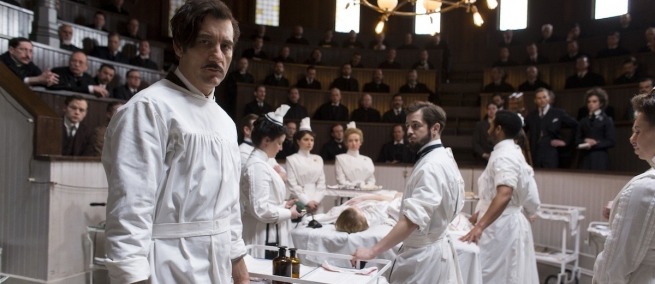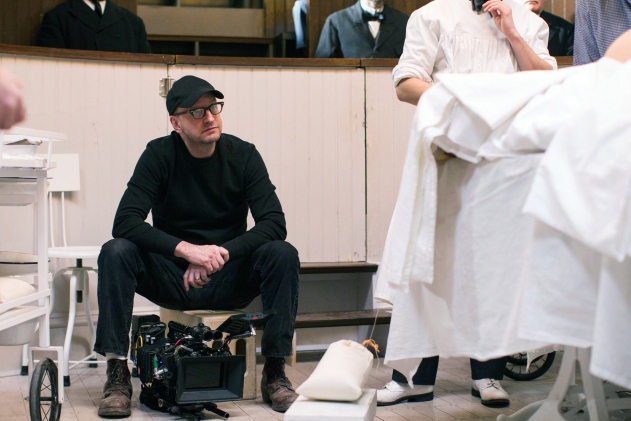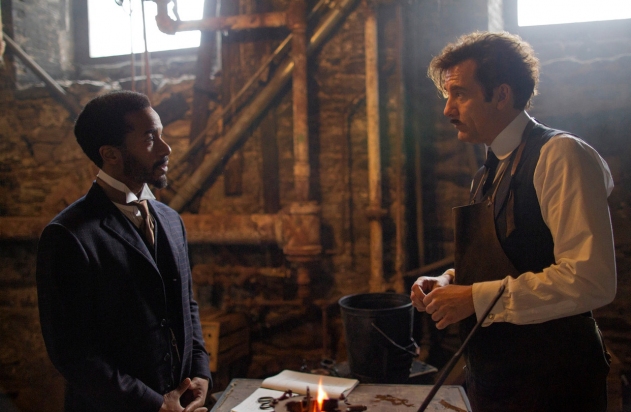
With the first two seasons of Steven Soderbergh's period medical drama THE KNICK now streaming on HBO Max, and talk of a third season, we thought it was a good time to revisit our meeting with the show's medical, historical, and technical advisor Dr. Stanley Burns. In 2016, we visited Dr. Burns at his New York townhouse which contains his archive of hundreds of thousands of medical photographs.
At the time, we also discussed Dr. Burns's role helping to recreate Civil War surgery for the PBS series MERCY STREET. We have edited that part out of the below interview. You can read the original interview here.
Science & Film: One of the things I love about THE KNICK is that it dramatizes that discovery process.
Stanley B. Burns: You see every discovery, you see the thought process. What you’re witnessing there, a lot of the stories, are from my material. I have the complete library of the major medical journals from about 1885 to 1935. We have 10,000 books here.
S&F: Do people come here knowing exactly what they are looking for?
SB: Not exactly. People come here not knowing what they’re looking for, and then they find it. That’s why we were THE KNICK advisors, because I had written an article about a woman with nasal destruction from syphilis—this is one of the things I’ve been promoting for years because I have great pictures of that. All of that came out of here. When they came here they had a pilot, they left with a season. Where are you going to look for historic medical photographs? Here.
S&F: So the writers knew they wanted to write this show?
SB: Jack Amiel and Michael Begler, the writers, and Steven Soderbergh, the director, came here to discuss their pilot. They were supposed to be here for a half hour or so, and they stayed for several hours, and they got the stories because I showed them each and every one. That’s what I do; I’m a storyteller. I’ve written 1,179 articles. From that day on I was a member of the team. [My daughter] Liz and I were on set for the entire production. We went through the [surgical] procedures to show them what to do. We made sure the surgeries were period perfect.

Steven Soderbergh on the set of THE KNICK
S&F: How was working on this show different than consulting on a documentary?
SB: Usually a documentary is someone else’s story. These are my stories. The showrunners came to us with an idea and we filled in the blanks. The whole part of the brain that is filled with songs, for me is filled with pictures and stories. I don’t remember songs. Just think of all the songs you know, that’s all the pictures I have.
S&F: Can you give me an example of how you worked together with Soderbergh?
SB: The first day of shooting on THE KNICK they filled up the big surgery amphitheater with about 100 doctors, and Steven walks into the room and is getting ready to shoot and I said, this isn’t right. You have all these young, good-looking doctors up front. If Spielberg or Scorcese invited you to watch them film, would you be in the first row, or the last row? So it’s all the older experienced professors up front, and all the younger, inexperienced doctors who know nothing, who barely know what they’re seeing, in back. Steven listened–he then spent a half an hour rearranging the audience so that the older-looking doctors were right up front like they were meant to be. Had it been done the wrong way, all the historians in the world would have watched it and said, what’s Jake Gyllenhaal doing in the first row, and Sean Connery doing in the back row?
S&F: Have you ever had any historians critique the show?
SB: THE KNICK has only received positive feedback. I am a member of many surgical groups and all the historical groups. THE KNICK is perfect. One of the results of the series is the realistic and medically accurate medical models and prosthetics. Between Season 1 and Season 2 Fractured FX (the make-up FX company) was hired by Boston Children’s Hospital, a division of Mass General, to create prosthetic body parts so that surgeons could learn to operate. The neurosurgeons worked with [Fractured FX] to make sure that the skin and tissue and brain was exactly accurate. You couldn’t tell the difference between a real person and the prosthetic. That’s an example of how medical science was advanced from The KNICK.

André Holland and Clive Owen in THE KNICK
What I say in every one of my lectures is that the doctors 100 years ago or 200 years ago were just as smart, just as innovative, just as interested in helping their patients, but they labored under inferior knowledge and technology. The one critical thing to come away with is that 100 years from now [doctors] will look at us the same way. The way medicine is advancing, bacteria can be used as indicators of everything from asthma to diabetes. In 50 years they will be swabbing all your orifices and skin to see what’s growing on you and in you, and will be able to tell what you have and what you will get. Yesterday alone I was absolutely thrilled to see that they discovered how to diagnose pancreatic cancer through the growth of a certain bacteria. Martin J. Blaser, MD is Director of the Human Microbiome Program at NYU and was the major proponent of that theory. We were pleasantly surprised when Marty was one of the 100 most influential people in the world according to Time Magazine, because he has totally changed the concept of causation and diagnosis of disease.
Although I’m a practicing ophthalmologist, I am in both the departments of Medicine and Psychiatry at NYU, so I go to medical and psychiatric grand rounds, and it’s absolutely amazing. When I went to medical school they taught us that 50% of what we learned in five years would be outmoded. I’ve had so many five-year periods.
S&F: Did you have a good time working on the show?
SB: We had a great time because I saw my stories come to life and had the honor of working with such amazing people.
♦
The first two seasons of THE KNICK, which premiered in 2014 and 2015, were directed by Steven Soderbergh and written by Jack Amiel and Michael Begler. Clive Owen and André Holland star.
TOPICS